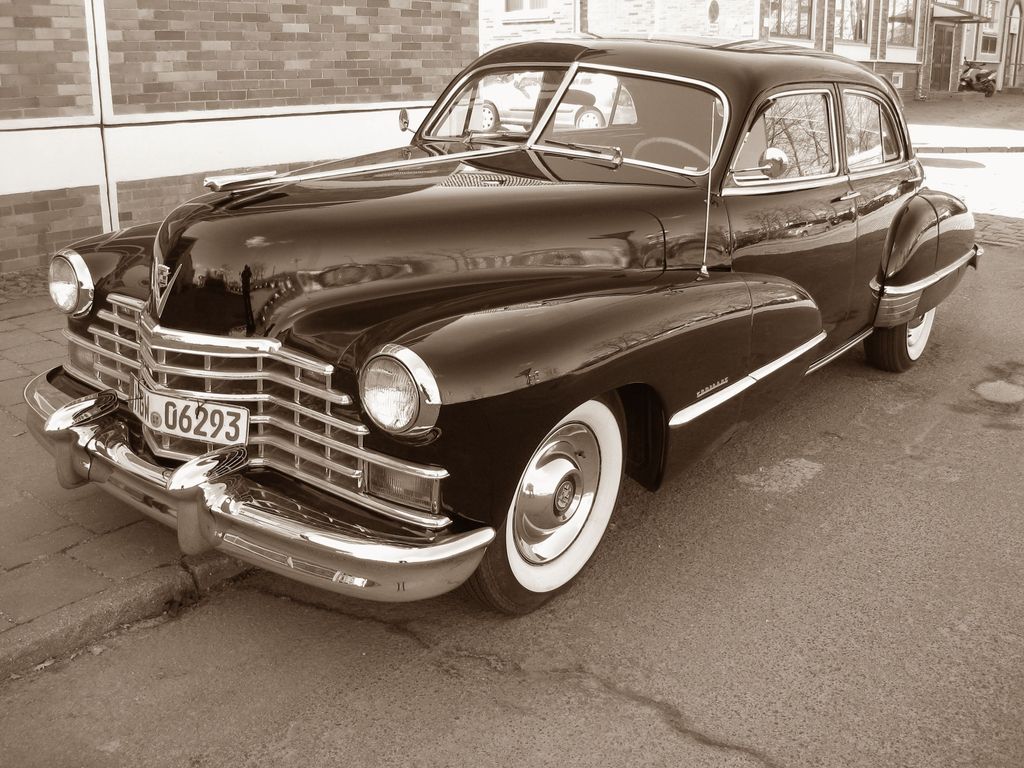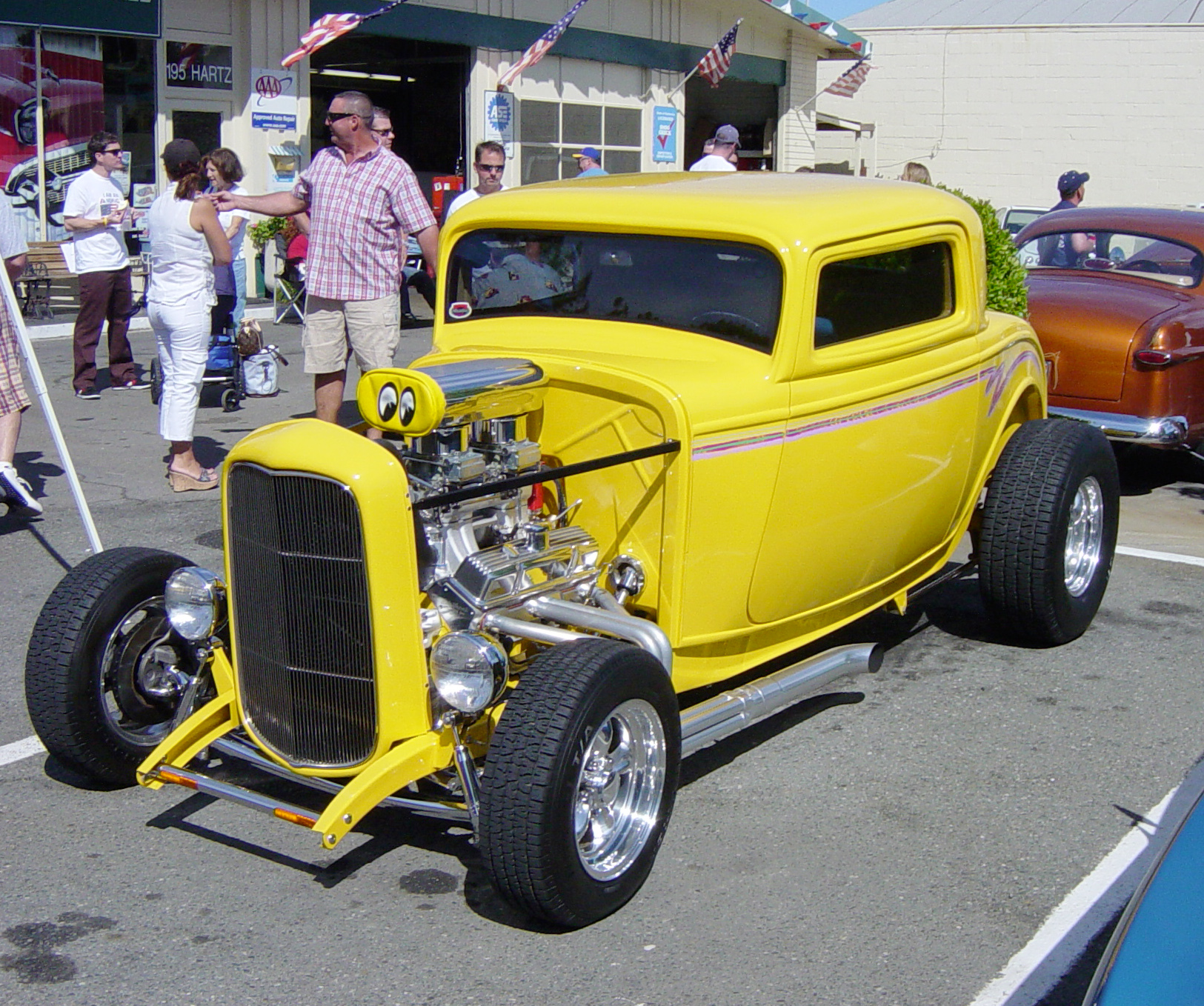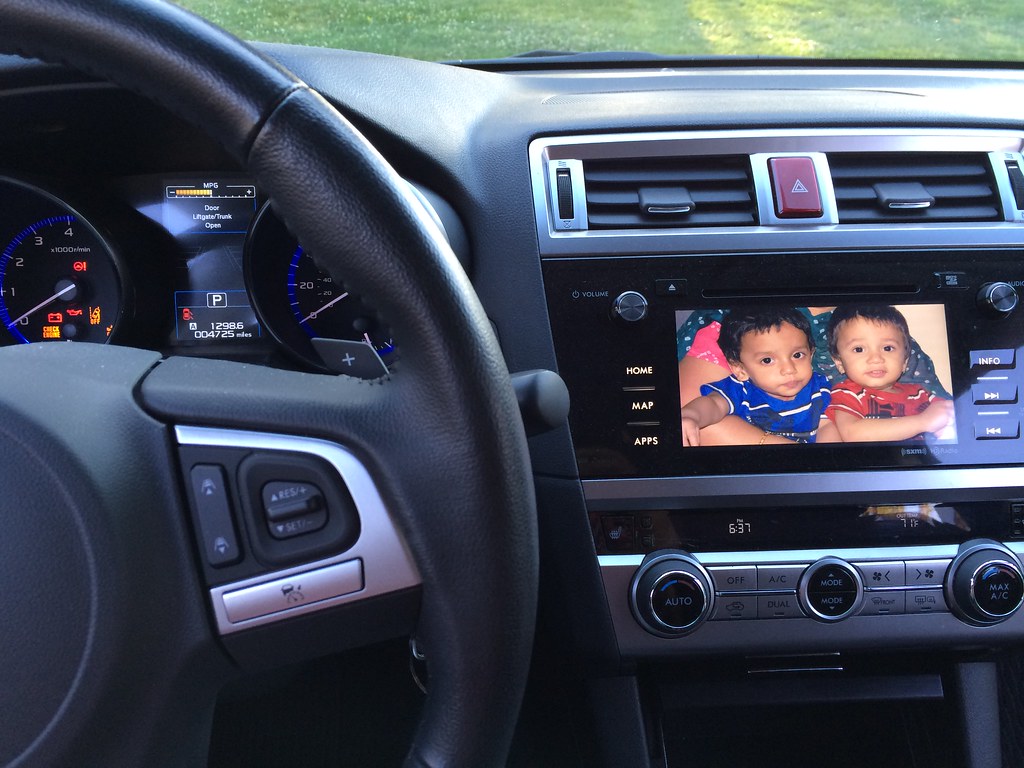
In the fast-paced realm of automotive technology, today’s groundbreaking innovation can swiftly become tomorrow’s intriguing relic. The 1980s, a decade often romanticized for its bold aesthetics and ambitious technological leaps, was a particularly fertile ground for futuristic aspirations within the car cabin. Dashboards transformed into vibrant canvases for digital displays, synthesized voices, and an array of new controls, all promising a more connected and controlled driving experience.
This era was characterized by an unbridled enthusiasm for integrating electronics and novel interfaces into vehicles, pushing the boundaries of what a car interior could be. Manufacturers experimented with concepts that felt plucked straight from science fiction, aiming to imbue cars with a sense of intelligence and cutting-edge sophistication. Yet, many of these ‘revolutionary’ features, despite their initial dazzle, proved to be fleeting trends or simply too ahead of their time, ultimately unable to deliver on their grand promises.
We embark on a critical retrospective, not merely to revel in nostalgia, but to dissect the very DNA of these vanished dashboard technologies. Our journey will reveal why some cutting-edge features from the ’80s, once hailed as the future, failed to integrate seamlessly into the long-term automotive landscape. By examining their design, functional challenges, and eventual replacement, we gain invaluable insights into the relentless evolution of vehicle interiors and the enduring principles of effective human-machine interaction.

1. **Digital Speedometers with LED Displays**The advent of digital speedometers in the 1980s heralded a new age of automotive instrumentation, replacing traditional analog dials with a more direct, numerical readout. These displays, often glowing in bright red or green LED numbers, projected an undeniable ‘sci-fi’ aesthetic, promising a future where information was delivered with stark, electronic precision. For a public increasingly fascinated by computers and digital gadgetry, this felt like a natural, logical progression, pushing cars into the technological mainstream.
However, the initial allure of these digital readouts quickly encountered friction with the realities of human perception and driving ergonomics. Many drivers found these LED numbers surprisingly challenging to read at a glance, especially when compared to the instant, intuitive comprehension offered by a sweeping analog needle. The eye had to process individual digits rather than interpreting a position on a scale, a subtle but significant difference that could detract from split-second information gathering on the road.
Furthermore, the early generations of these digital displays were plagued by reliability issues. They tended to malfunction more frequently than their robust mechanical counterparts, undermining driver confidence and adding to maintenance headaches. This susceptibility to failure, combined with the ergonomic concerns, highlighted a critical lesson: technological novelty must be balanced with proven reliability and intuitive design to be truly effective in a safety-critical environment like a car.
Today’s digital displays, while ubiquitous, represent a significant evolution from their 1980s predecessors. They are far smoother, more integrated into the overall dashboard architecture, and less visually jarring. Modern LCD and OLED screens offer customizable layouts, crisp graphics, and ambient light adjustments that vastly improve legibility and reduce eye strain. This progression demonstrates a mature understanding that digital information delivery in a car requires sophistication beyond just glowing numbers; it demands thoughtful design that prioritizes safety and user comfort.
Read more about: Tech Shame? 14 Car Features That Instantly Reveal Your Ride’s Age – What’s the Least Smart?
2. **Voice Alert Systems**The 1980s saw the ambitious introduction of voice alert systems, aiming to elevate automotive safety and awareness through auditory cues. These systems, sounding warnings like “door is ajar” or “fuel level is low,” represented a forward-thinking attempt to use voice technology to directly communicate critical vehicle status to the driver. The underlying theory was sound: a spoken warning could cut through visual clutter and grab a driver’s attention more effectively than a simple light.
Yet, this innovative concept quickly veered into the territory of annoyance for many drivers. The synthesized voices, often monotonous or overly insistent, could become irritating rather than helpful, particularly during routine driving or when minor issues triggered repeated warnings. The constant stream of vocal prompts, even for non-critical alerts, created a sense of being nagged by the car, diminishing the perceived utility and increasing driver frustration.
The complexity these systems introduced often outweighed their practical benefits. Adding layers of audio hardware and software to generate these spoken warnings increased manufacturing costs and potential points of failure, all without delivering a proportional improvement in safety or convenience. The balance between providing useful information and overwhelming the driver with auditory input proved to be a delicate one, and early voice alert systems frequently missed the mark.
Automotive manufacturers ultimately pivoted away from intrusive voice alerts, opting for a more minimalist and effective approach. Modern vehicles largely rely on concise chimes and clear visual alerts on integrated displays. This evolution reflects a refined understanding of human-machine interface design, where auditory signals are reserved for truly critical warnings and are typically less verbose, allowing drivers to maintain focus without unnecessary verbal interruptions. The lesson here was clear: less can often be more, especially when it comes to a car’s ‘voice’.
Read more about: The 14 Essential Free & Free-Tier Apps for Enhanced Car Health, Performance, and On-Road Efficiency
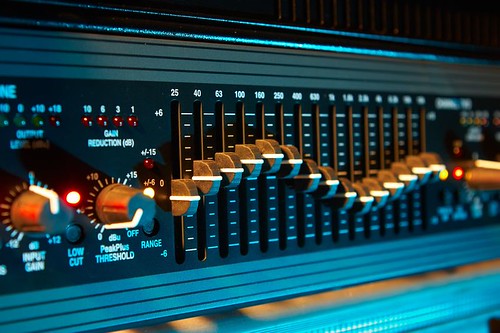
3. **Graphic Equalizer Panels**For the audiophiles and style-conscious drivers of the 1980s, integrated graphic equalizer panels were a definitive statement of sophistication and control. These flashy panels, often illuminated and prominently positioned on the dashboard, allowed drivers to meticulously customize their audio settings using an array of physical sliders. They transformed the car’s sound system into a personalized auditory experience, offering a tangible connection to the music being played.
The visual spectacle of these glowing, sliding controls certainly added a ‘cool’ factor to car interiors, appealing to an era that celebrated visible technology. Drivers could sculpt their soundscape, tweaking bass, mid-range, and treble with a level of granular control that felt professional and immersive. This hands-on approach to audio customization was a significant upgrade from simpler bass and treble knobs, promising a concert-like experience within the confines of a vehicle.
However, the very features that made them appealing—the multitude of physical sliders and their prominent display—also became their undoing. Operating these graphic equalizers required significant visual attention and fine motor skills, making them a considerable distraction while driving. Adjusting multiple sliders to find the perfect sound profile diverted eyes and focus from the road, posing a potential safety hazard. The quest for acoustic perfection often came at the expense of driver concentration.
As automotive design evolved, the complexity of physical equalizer panels gave way to simpler, more integrated digital controls. Modern audio systems offer extensive customization options, but these are typically managed through intuitive touchscreens or steering wheel-mounted buttons. The physical equalizer has largely vanished, replaced by interfaces that prioritize ease of use, minimize distraction, and seamlessly integrate with broader infotainment systems. The shift underscores a recognition that while customization is valued, it must be accessible and safe within the driving environment.
Read more about: Seriously, Where Did They Go? 15 Wildly Nostalgic Car Accessories That Vanished Into Thin Air
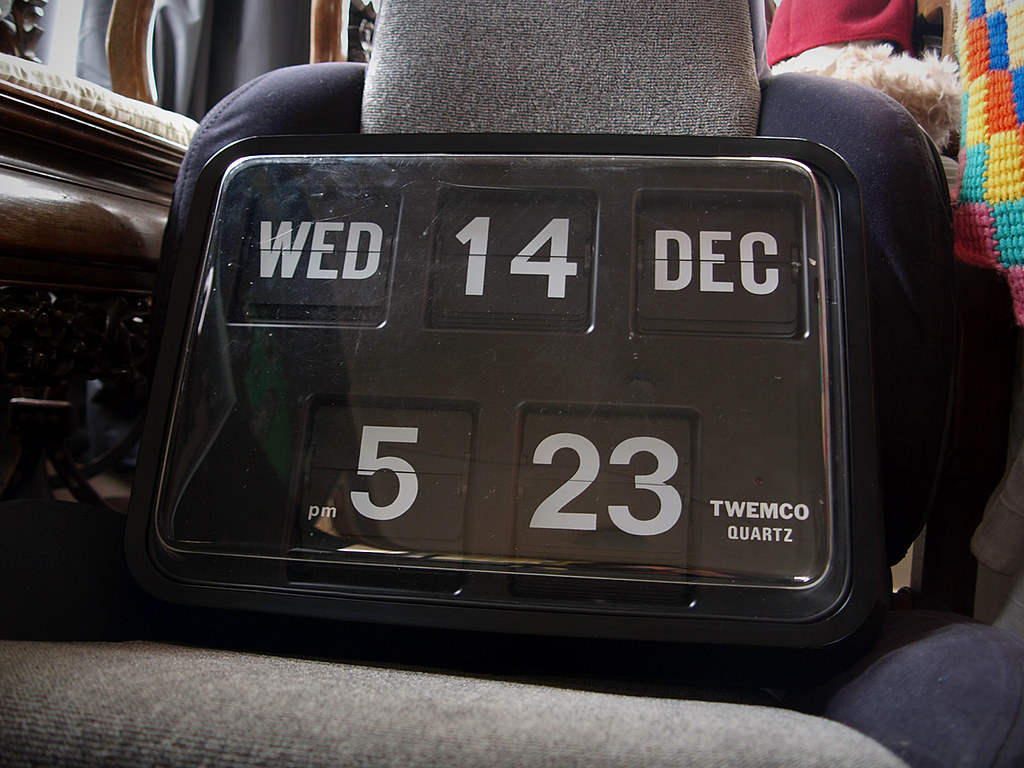
4. **Mechanical Flip Clocks**Before the ubiquitous reign of digital timekeeping, mechanical flip clocks graced many dashboards, offering a charmingly tactile method of displaying the hour and minute. These devices featured small, rotating number plates that would audibly “click” into place with each passing minute, a subtle mechanical ballet that offered a unique aesthetic appeal. They evoked a sense of classic craftsmanship and an era when the inner workings of devices were more transparent.
These clocks contributed to a distinctive vintage ambiance, setting them apart from the more sterile digital displays that would follow. The visible motion of the numbers changing, combined with the gentle sound, created a focal point on the dashboard that was both functional and aesthetically engaging. They were a testament to the ingenuity of electro-mechanical design, providing a sense of tangible engineering in an increasingly electronic world.
Despite their charm, mechanical flip clocks possessed significant practical drawbacks that ultimately sealed their fate. They were not always as accurate as emerging quartz technologies, sometimes gaining or losing time, which could be frustrating for drivers relying on precise timekeeping. More critically, their intricate mechanical nature made them susceptible to wear and tear. Moving parts, exposed to vibrations and temperature fluctuations within a car, meant they could wear out relatively quickly, leading to unreliable operation or complete failure.
Eventually, the relentless pursuit of reliability and precision led to their replacement by quartz and fully digital clocks. These modern alternatives offered superior accuracy, greater durability, and lower manufacturing costs, making the mechanical flip clock a less viable option for mass production. Today, while treasured as a novelty in vintage vehicles or retro-inspired designs, the mechanical flip clock serves as a reminder of an era when the elegance of visible mechanics took precedence over the absolute precision and robustness offered by solid-state electronics.
Read more about: The Resurgence of the Real: 14 Analog Technologies from the 70s Making a Modern Comeback

5. **Vacuum Fluorescent Displays (VFDs)**Vacuum Fluorescent Displays, or VFDs, were once a hallmark of futuristic dashboards, offering a distinctive glowing blue-green light for a multitude of indicators. From speed readouts to climate control settings, these displays provided a crisp, high-contrast visual that felt undeniably advanced for their time. Their unique luminescence and ability to display alphanumeric characters with clarity made them a popular choice for automotive applications where instant, legible information was crucial.
The technology behind VFDs involved illuminating segments of phosphors with electrons in a vacuum, creating a vibrant, uniform glow that was particularly effective in low-light conditions. This luminous quality made them easily readable at night and gave a premium, high-tech feel to the car’s interior. For a period, VFDs were the gold standard for integrated digital readouts, promising a sleek and modern user experience.
However, the inherent characteristics of VFD technology presented significant long-term challenges in the demanding automotive environment. One major drawback was their tendency to fade over time, leading to dimmer and less legible displays, especially with prolonged exposure to sunlight or high usage. This degradation compromised their effectiveness and the overall aesthetic of the dashboard as the car aged, signaling a design flaw that modern drivers would find unacceptable.
Furthermore, VFDs were sensitive to temperature changes, which could affect their performance and longevity, a critical issue in vehicles exposed to extreme hot and cold conditions. The limitations in color display capabilities also constrained design possibilities. Modern LCD and OLED screens have since eclipsed VFDs, offering superior durability, full-color capabilities, and greater flexibility in display design. VFDs are now rarely seen in current vehicles, a testament to the continuous drive for more robust and versatile display technologies in automotive applications.
Read more about: The Vanishing Act: 15 Iconic Dashboard Features from the 80s That Paved the Way for Tomorrow
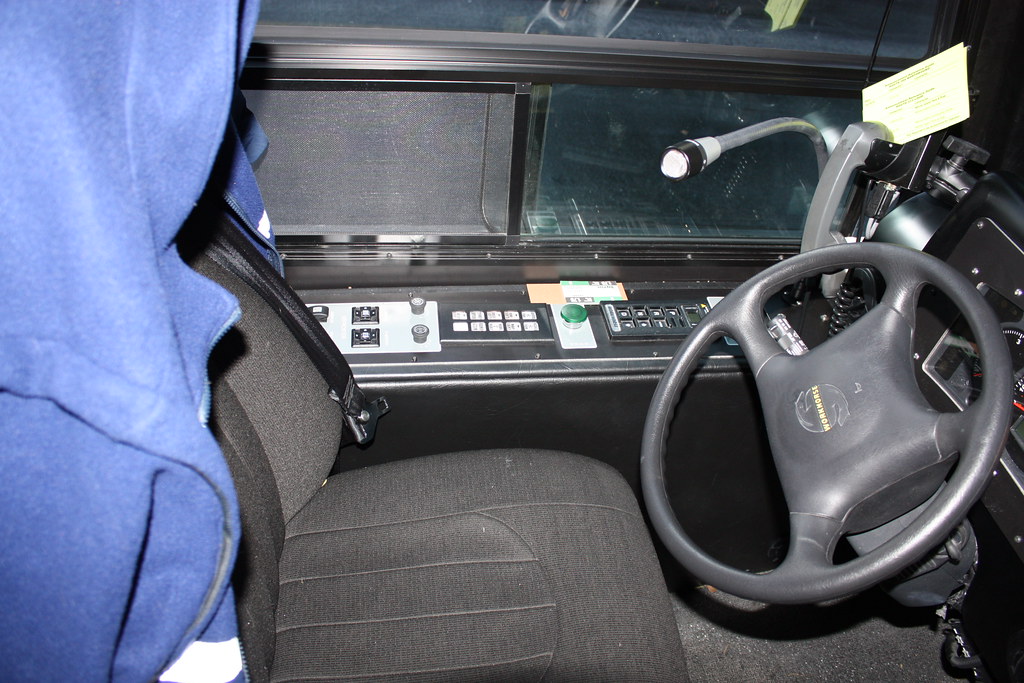
6. **Toggle Switch Climate Controls**In the 1980s, climate control systems often relied on simple, tactile toggle switches for managing the cabin environment. These switches provided a straightforward, physical interface for controlling essential functions like air direction, temperature, and fan speed. The design philosophy was one of clear, distinct actions: flip a switch up or down, push it forward or back, to achieve a desired outcome. This direct mechanical connection offered a sense of control that many drivers appreciated.
These toggle switches were robust and relatively inexpensive to manufacture, making them a practical choice for a wide range of vehicles. Their straightforward nature meant that drivers could often operate them by feel, without needing to divert their eyes from the road. The simplicity of their design, however, also came with inherent limitations in terms of precision and user feedback, which would become increasingly apparent as automotive technology advanced.
While functional, these toggle-based systems typically lacked the precision and visual clarity that drivers began to expect from their vehicles. Adjusting temperature or fan speed often involved a series of discrete steps, without the fine-tuned control or visual confirmation provided by more advanced interfaces. It was difficult to ascertain the exact setting at a glance, leading to a degree of guesswork and multiple adjustments to achieve optimal comfort.
Modern climate control systems have largely abandoned toggle switches in favor of more refined solutions like digital displays and rotary dials. These contemporary interfaces offer superior visual feedback, precise temperature control, and often integrate sophisticated automatic climate functions. The evolution from simple toggles to advanced digital and rotary systems reflects a broader industry trend towards enhancing user experience through improved ergonomics, precision, and intuitive visual communication, making the old toggles a nostalgic feature primarily found in vintage models.
Read more about: The Vanishing Act: 15 Iconic Dashboard Features from the 80s That Paved the Way for Tomorrow
7. **Tachometers with Colored Bands**For performance cars of the 1980s, tachometers adorned with vibrant, color-coded bands were a distinctive feature, designed to add a sporty aesthetic and provide quick visual cues for optimal shifting. These colorful segments, often in red for the higher RPM range, served as an immediate indicator for drivers, suggesting when to shift gears to maximize power or avoid over-revving the engine. They were an eye-catching element, aimed at enhancing the immersive experience of driving a spirited vehicle.
The visual impact of these colored bands was undeniable, contributing significantly to the perceived ‘sportiness’ of the dashboard. They spoke to a generation that appreciated overt design signals of performance and capability, transforming a purely functional gauge into a dynamic, performance-oriented display. This visual language was intended to make critical information instantaneously accessible, supporting a more engaged and intuitive driving style.
However, beneath the surface of their bold aesthetics, these colored bands were often more about style than precise substance. While they provided a general guide, they rarely offered the granular accuracy required for truly optimized performance driving or detailed diagnostics. The actual practical utility beyond a broad warning often fell short, making them a largely superficial addition rather than a deeply engineered performance tool. They were a visual shortcut, but not always the most effective one.
As automotive technology progressed, the emphasis shifted towards more precise and versatile methods of displaying critical engine data. Today’s dashboards utilize digital displays or sleeker, more refined analog gauges that offer clear, exact RPM readings. Often, these digital systems can provide customizable warnings or even integrate with advanced shift lights, offering superior guidance compared to static colored bands. The colorful bands have mostly disappeared, reflecting a design ethos that prioritizes clear, accurate data and functional sophistication over purely aesthetic, albeit dynamic, visual flair.
Continuing our journey through the annals of automotive technology, we now dissect the remaining pioneering dashboard features of the 1980s. These innovations, much like their predecessors, offered a fascinating glimpse into the era’s vision for the future of driving, yet ultimately succumbed to technical shortcomings, evolving societal needs, and the relentless march of technological advancement. By examining their rise and fall, we uncover critical lessons that remain profoundly relevant for contemporary automotive design and innovation, reminding us that even the most cutting-edge features can prove to be transient. Our analysis is not just a look back, but a forward-thinking evaluation of what truly constitutes enduring utility in the demanding environment of a vehicle’s interior.
Read more about: The Vanishing Act: 15 Iconic Dashboard Features from the 80s That Paved the Way for Tomorrow
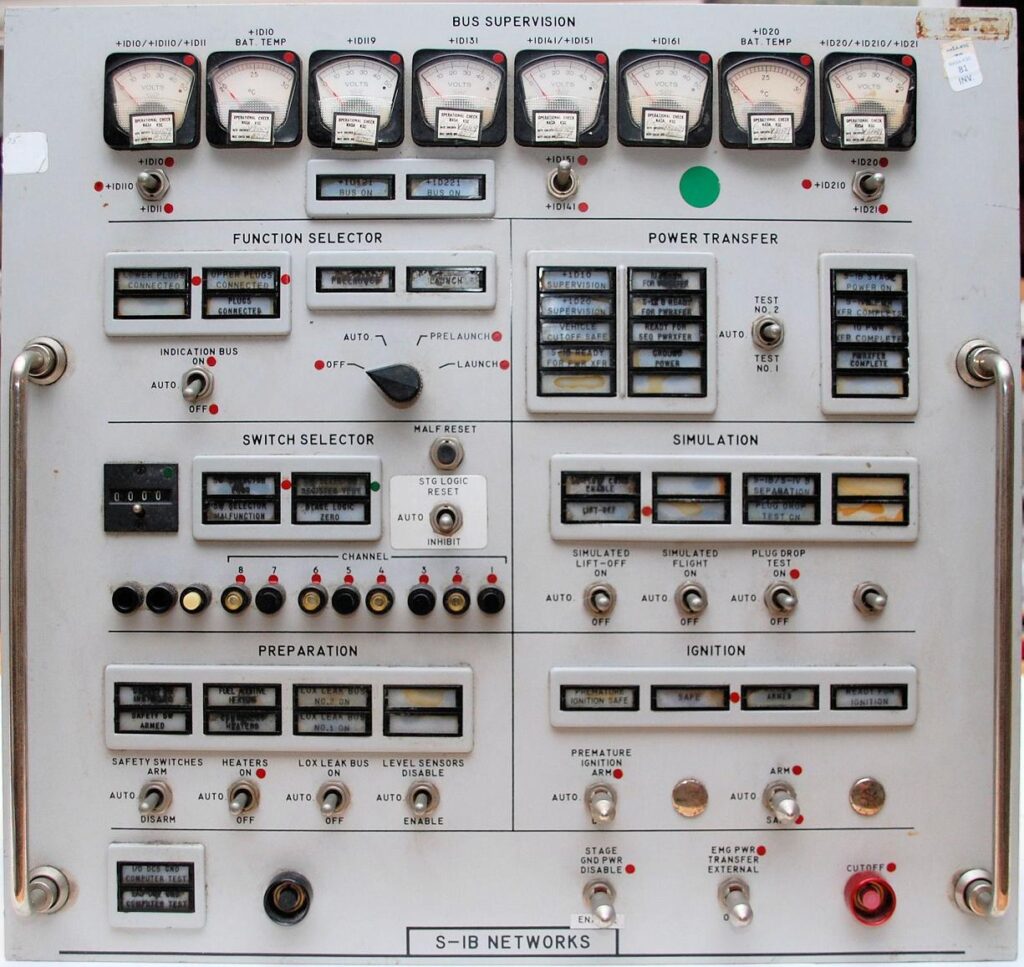
8. **Trip Computers with Button Panels**In an era before integrated infotainment systems and seamless digital connectivity, the early trip computer emerged as a groundbreaking attempt to bring sophisticated data management directly to the driver. These systems allowed motorists to monitor essential metrics such as fuel efficiency, distance traveled, and average speed, offering a level of insight that was truly advanced for their time. The very concept promised a more informed and efficient driving experience, empowering drivers with data previously unavailable at their fingertips, transforming the dashboard into a cockpit of operational statistics.
Despite their innovative spirit, these early trip computers suffered from significant limitations. They often lacked real-time integration with other vehicle systems, presenting data that felt isolated rather than part of a cohesive digital ecosystem. The information, while useful, was not always presented in the most digestible format, making it challenging for drivers to glean immediate, actionable insights. This disconnect between data availability and effective presentation proved to be a critical hurdle for their long-term viability, as drivers sought more than just raw numbers.
The advent of modern infotainment systems has effectively rendered these old-style trip computers obsolete. Today’s vehicles effortlessly handle and present this data, often integrating it seamlessly into customizable digital dashboards or large, intuitive touchscreens. These contemporary solutions offer real-time updates, visually rich graphics, and predictive analytics, making the button-panel trip computer a distant memory—a crucial stepping stone in the evolution of in-car data management that taught valuable lessons about user interface design and system integration.
Read more about: The Electric Pickup Truck Showdown: A Comprehensive Review of Ford F-150 Lightning and Tesla Cybertruck
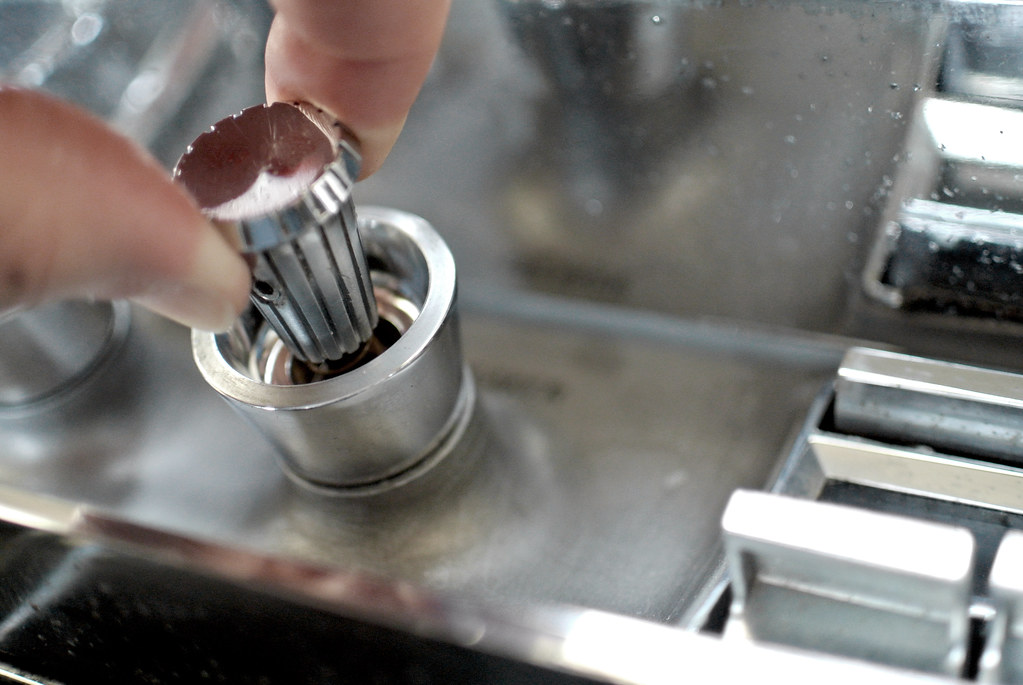
9. **Retractable Radio Antenna Controls**For a specific period in the 1980s, the inclusion of a dashboard button dedicated to manually raising or lowering the radio antenna was seen as a mark of sophistication and driver control. This feature added a unique sense of flair to the act of tuning into FM stations, allowing the driver to command a visible aspect of their vehicle’s functionality. It was a small but tangible connection to the car’s mechanics, enhancing the driving experience with a subtle nod to personalized command and technical prowess, especially when pulling into a garage or car wash.
However, the very mechanical nature that lent these systems their distinct charm also became their Achilles’ heel. The complex mechanisms designed to extend and retract the antenna were prone to failure, often getting stuck in either the up or down position. Exposure to the elements, coupled with constant operation, meant these motors and gears were susceptible to wear and tear, leading to frustrating maintenance issues and diminished reliability. What began as a convenience often transformed into an intermittent malfunction, undermining its perceived value.
The automotive industry eventually recognized the inherent fragility and unnecessary complexity of retractable antennas. They have largely been replaced by more durable and maintenance-free solutions, such as fixed-mast or aerodynamic shark-fin antennas. These modern alternatives offer superior reliability, eliminate moving parts that can fail, and contribute to the vehicle’s overall aesthetic and aerodynamic efficiency without any manual intervention. The dedicated control button on the dashboard, once a symbol of advanced features, has thus become a distinct relic of the past.
The obsolescence of retractable antenna controls underscores a broader design principle: elegance must be balanced with practical engineering and robustness. While the visual spectacle of a rising antenna might have appealed to the ’80s fascination with overt technology, the everyday realities of reliability and seamless functionality ultimately drove its demise. This transition highlights a continuous industry drive towards simplicity, durability, and features that enhance user experience without introducing unnecessary points of failure or maintenance overhead.
Read more about: The Great Tech Purge: 14 Iconic Smartphone Features That Secretly Vanished from Our Pockets

10. **Dashboard Cigarette Lighters**For decades, dashboard cigarette lighters were a ubiquitous feature in almost every vehicle, reflecting the widespread smoking culture of the time. These units typically consisted of a built-in socket that housed a removable lighter coil, which, when pressed in, would heat up to ignite a cigarette. Beyond their primary function, these sockets also doubled as convenient power sources, offering an early form of in-car utility for various accessories. They were an unquestioned staple of automotive interiors, deeply embedded in the design language and user expectations of the era.
As societal attitudes towards smoking began to shift dramatically, influenced by growing health awareness and declining smoking rates, the prominence and necessity of dedicated cigarette lighters waned. Concurrently, the proliferation of personal electronic devices, from portable stereos to early mobile phones, created a new demand for accessible charging points within the vehicle. This confluence of changing cultural norms and technological advancements initiated a fundamental re-evaluation of the lighter’s role in the car interior.
Manufacturers gradually began to adapt to these evolving needs. While the 12-volt socket itself often remained—a versatile power conduit for various gadgets—the actual lighter coil began to disappear from standard vehicle equipment. The socket transitioned from being primarily a cigarette lighter port to a generic 12-volt power outlet, serving a much broader range of electronic accessories. This subtle but significant change reflected a broader shift in automotive design: interiors were no longer just about driving but also about supporting the driver’s increasingly connected lifestyle.
Today, the dedicated cigarette lighter is rarely included, having been largely supplanted by modern USB charging ports that cater directly to smartphones and other contemporary devices. This evolution exemplifies how car interiors are dynamic spaces, constantly adapting to mirror shifts in driver habits, technological dependencies, and public health consciousness. The journey of the cigarette lighter from an essential accessory to an anachronism serves as a powerful testament to the responsiveness of automotive design to wider societal and technological currents.
Read more about: Tech Shame? 14 Car Features That Instantly Reveal Your Ride’s Age – What’s the Least Smart?

11. **Analog Bar Graph Gauges**In the diverse landscape of 1980s dashboard instrumentation, analog bar graph gauges offered a distinct visual alternative to traditional needle-based indicators for vital information like fuel level, temperature, or oil pressure. These gauges, often presented as horizontal or vertical bars that incrementally filled or emptied, were certainly eye-catching and departed from conventional design. Their graphic presentation aimed to convey information quickly through a visual representation of quantity rather than a precise point on a scale, aligning with a desire for dashboards that felt more ‘digital’ and modern, even if still analog in function.
While their aesthetic appeal was undeniable, offering a seemingly contemporary look, the practical utility of these bar graph gauges often fell short in terms of precision. Unlike a sweeping needle that could pinpoint an exact reading, the segmented nature of a bar graph provided a more generalized, stepped indication. This lack of granular accuracy meant that while drivers could ascertain broad statuses (e.g., ‘fuel is half full’), they struggled to discern exact readings or subtle fluctuations, which can be crucial for detailed vehicle monitoring. They prioritized visual novelty over precise functional data, often being more about style than truly actionable substance.
The limitations of bar graph gauges became increasingly apparent as automotive technology progressed and driver expectations for precise, clear information grew. The industry eventually pivoted away from this style, largely in favor of either highly accurate digital numerical displays or refined traditional analog dials. These alternatives offered superior clarity and exactness, allowing drivers to gain a precise understanding of their vehicle’s status at a glance. The need for precise data in a safety-critical context outweighed the initial visual appeal of the bar graph.
Today, the bar graph style has quietly exited mainstream dashboard designs. Its demise reinforces a crucial lesson in human-machine interface development: visual flair must always serve, not overshadow, the fundamental need for clear, accurate, and easily interpretable information. Modern dashboard designs prioritize functional sophistication and data integrity, recognizing that while aesthetics are important, they must never compromise the driver’s ability to quickly and accurately understand critical vehicle parameters.
Read more about: The Vanishing Act: 15 Iconic Dashboard Features from the 80s That Paved the Way for Tomorrow

12. **Customizable Backlit Panels**In the more exclusive echelons of 1980s automotive design, a select few high-end cars began to introduce a feature that would become a standard expectation decades later: customizable backlit panels. These early systems allowed drivers to adjust the dashboard lighting color or intensity, adding a touch of luxury and personalization to the night-driving experience. It was an ambitious foray into tailoring the vehicle’s interior ambiance, signaling a nascent understanding that the dashboard could be more than just functional, aspiring to be an extension of personal style and comfort.
In the more exclusive echelons of 1980s automotive design, a select few high-end cars began to introduce a feature that would become a standard expectation decades later: customizable backlit panels. These early systems allowed drivers to adjust the dashboard lighting color or intensity, adding a touch of luxury and personalization to the night-driving experience. It was an ambitious foray into tailoring the vehicle’s interior ambiance, signaling a nascent understanding that the dashboard could be more than just functional, aspiring to be an extension of personal style and comfort.
However, these pioneering customizable lighting systems were inherently limited by the technology of their time. The range of available colors was often restrictive, and the intensity adjustments were not always smooth or evenly distributed. More critically, the reliability of these early electronic lighting controls could be questionable, with systems prone to malfunctions or inconsistent performance over time. What was intended as a premium, personalized feature sometimes became a source of frustration, feeling primitive when compared to the flawless integration expected of modern luxury vehicles.
The evolution of lighting technology, particularly the advent of LEDs and sophisticated digital control modules, has profoundly transformed this concept. Modern vehicles now offer highly integrated ambient lighting systems that provide a vast spectrum of colors, dynamic patterns, and precise intensity control, often synchronized with driving modes or infotainment. These contemporary solutions are seamlessly integrated into the dashboard, door panels, and footwells, creating a cohesive and immersive cabin environment that is both visually stunning and highly customizable.
The early versions of customizable backlit panels have thus become historical footnotes, underscoring the journey from rudimentary personalization to an advanced, integral element of interior design. Their demise highlights how technological maturation enables the full realization of ambitious design concepts. What was once a limited, somewhat unreliable luxury feature has evolved into a sophisticated, highly refined aspect of the modern automotive experience, demonstrating that persistence in innovation, coupled with technological advancement, can transform aspirational ideas into seamless realities.
Read more about: The Vanishing Act: 15 Iconic Dashboard Features from the 80s That Paved the Way for Tomorrow
Our retrospective journey through the dashed ambitions and evolutionary triumphs of 1980s dashboard technology offers profound insights into the relentless pursuit of the perfect driving experience. Each of these features, from the digital speedometer’s fleeting glow to the car phone’s brief reign, serves as a crucial case study in the delicate balance between innovation, utility, and enduring design. They teach us that true progress in automotive interiors isn’t merely about introducing the newest gadget; it’s about rigorously evaluating its true value, its long-term reliability, and its seamless integration into the complex symphony of human-machine interaction. The lessons from these vanished technologies continue to shape today’s design philosophies, urging a critical approach to ‘cutting-edge’ features and reminding us that not all innovations are built to last, but all contribute to the invaluable learning curve of technological evolution.”}



